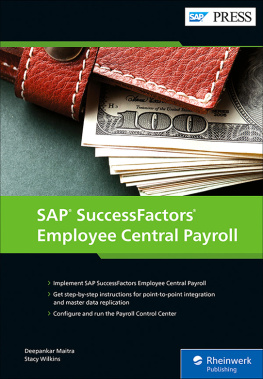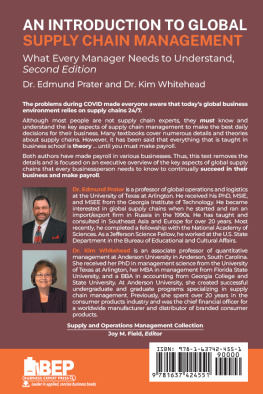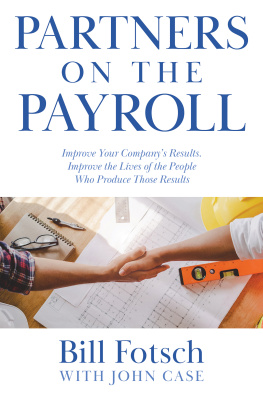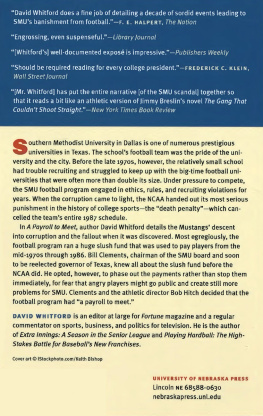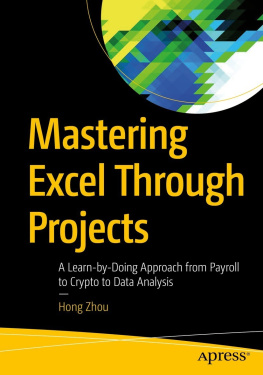We hope that you liked this e-book. Please share your feedback with us and read the to find out how to contact us.
Dear Reader,
Most people I know have encountered some sort of error with their paycheck at some point in their lives.
For me, it was at my very first job, working for minimum wage at the local library. The state minimum wage was raised by $.25 an hour, and it was a few weeks before I realized that my pay had not gone up with it! Sorting out the backpay (which, if I recall correctly, amounted to less than $10) took months, as the payroll system was inflexible and the process unclear.
Even when things are going right, payroll can be difficult. At a previous employer, my husband used to earn wildly different rates of pay depending on which job he was performing at the moment. Additionally, there were extra industry-specific rules about overtime pay, which could kick in after a certain number of hours worked in a single day or if he worked during certain hours of the night (and, of course, any work over 40 hours per week). The companys HR system could barely handle its own complex policies.
In short, payroll is complicated and essential. Getting it right requires clear processes and a well-designed, properly configured system. Between these pages, youll find instructions for just that!
What did you think about SAP SuccessFactors Employee Central Payroll ? Your comments and suggestions are the most useful tools to help us make our books the best they can be. Please feel free to contact me and share any praise or criticism you may have.
Thank you for purchasing a book from SAP PRESS!
Meagan White
Editor, SAP PRESS
www.sap-press.com
Rheinwerk Publishing Boston, MA
Notes on Usage
This e-book is protected by copyright . By purchasing this e-book, you have agreed to accept and adhere to the copyrights. You are entitled to use this e-book for personal purposes. You may print and copy it, too, but also only for personal use. Sharing an electronic or printed copy with others, however, is not permitted, neither as a whole nor in parts. Of course, making them available on the internet or in a company network is illegal as well.
For detailed and legally binding usage conditions, please refer to the section .
This e-book copy contains a digital watermark , a signature that indicates which person may use this copy:
Notes on the Screen Presentation
You are reading this e-book in a file format (EPUB or Mobi) that makes the book content adaptable to the display options of your reading device and to your personal needs. Thats a great thing; but unfortunately not every device displays the content in the same way and the rendering of features such as pictures and tables or hyphenation can lead to difficulties. This e-book was optimized for the presentation on as many common reading devices as possible.
If you want to zoom in on a figure (especially in iBooks on the iPad), tap the respective figure once. By tapping once again, you return to the previous screen. You can find more recommendations on the customization of the screen layout on the .
Preface
SAP ERP HCM Payroll has evolved into a user-friendly, cloud-based, modern global payroll product that is now branded as SAP SuccessFactors Employee Central Payroll. This book is a comprehensive guide for Employee Central Payroll that gives human resources (HR) consultants, payroll managers, and administrators step-by-step instructions for configuring and running Employee Central Payroll and integrating it with Employee Central.
Introducing fundamental payroll concepts, this book explores the configuration of the standard payroll engine as well as new developments for integrating with SAPs flagship HR product, Employee Central. Well cover the Payroll Control Center in detail, from both usability and configuration viewpoints.
Step-by-step configuration instructions are provided that follow the sequence of an Employee Central Payroll project: payroll elements, provisioning, Employee Central, Employee Central Payroll, master data integration, master data replication, and the Payroll Control Center.
The book also covers optional steps covering important new topics in postprocessing with the Employee Central user interface (UI): setting up pay statements, transferring pay results back to Employee Central, and configuring single sign-on (SSO). Our book ends with instructions on monitoring and troubleshooting and a practical discussion on implementation techniques and methods that are essential to succeed in implementing Employee Central Payroll.
While this book covers the steps required to run payroll, our emphasis is on the configurationhow to turn on the features that make Employee Central Payroll one of the best payroll systems in the world. Our discussion is applicable to all countries, but well use US examples whenever the topics touch upon country-specific items.
Objective
The main purpose of writing this book is to provide both new and experienced Employee Central Payroll users tasked with configuration an easy-to-use guide that is structurally intuitive and procedurally complete. Additionally, this book is designed to achieve the following goals:
Provide a general understanding of the complex payroll process
Payroll is a complex process with many steps and many possible points of failure. It requires many players to successfully configure it. Team members often play diverse rolestechnical, functional, support, processor, etc. Executing ones specific role in this complex chain of processes does not provide them the holistic view that is sometimes required to identify issues and resolve problems. This book is designed to provide both the big picture and the details.
Bridge the gap between SAP ERP HCM Payroll and Employee Central Payroll
SAP ERP HCM Payroll practitioners have spent many years learning how to configure SAP ERP HCM Payroll. While the payroll engine is the same, SAP has made some significant additions to their original product and rebranded it as Employee Central Payroll. The original SAP ERP HCM Payroll product is also included in the HR system. With the acquisition of SuccessFactors, SAP moved HR processes over to Employee Central, which is a completely new product that operates in the cloud and requires a different skillset to configure. Connecting the Employee Central Payroll product with Employee Central requires some of those skills. This book will address those skills specifically for components that impact payroll.

